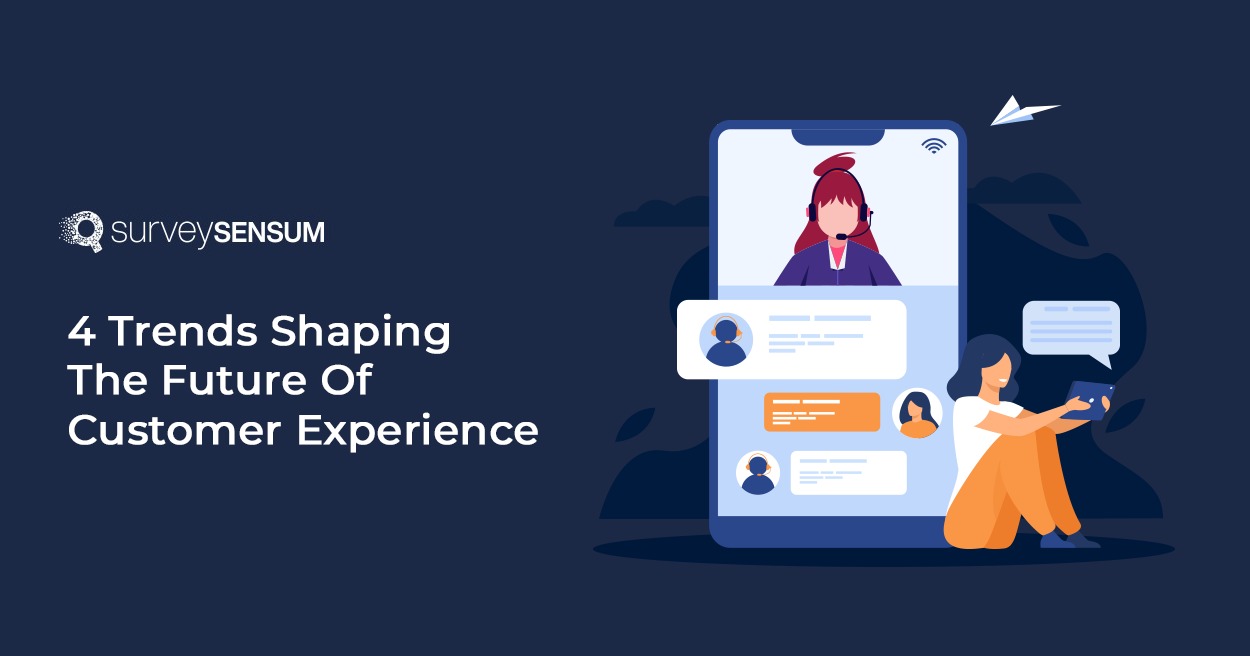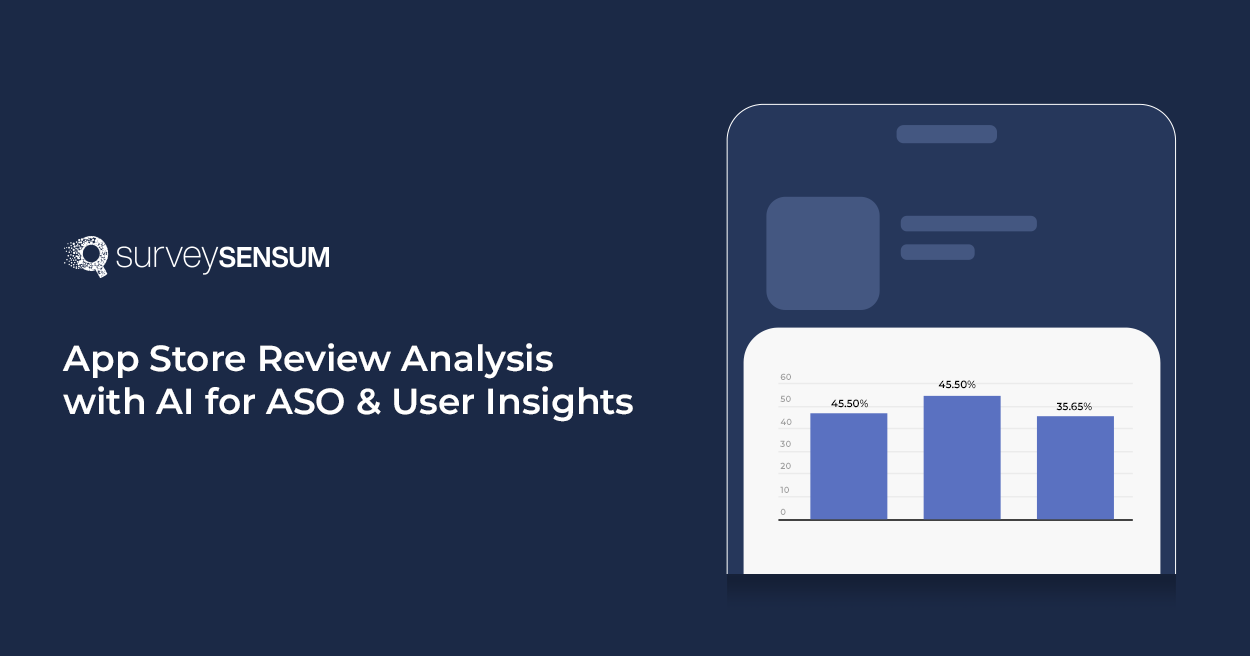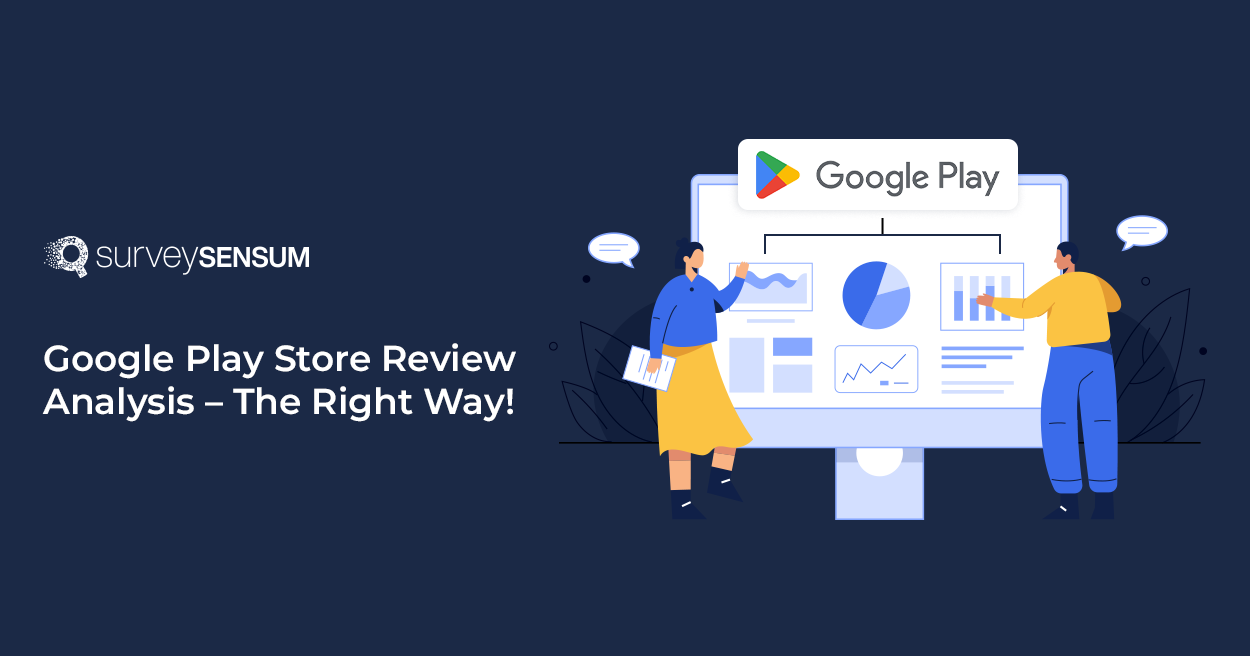

The future of customer experience is no longer being driven just by who is making a better product but also by who will create a better and more memorable experience. The future now stands on four pillars – data, AI, personalization, and convenience.
This creates even more pressure on organizations to retain customers in an era where their preferences and expectations are changing quickly every day and as customer expectations change, so should CX strategies to accommodate these changes. So, let’s see what your customers are demanding and how to meet and exceed them.
4 Trends That are Shaping the Future of Customer Experience
customers are increasingly shifting towards digital but there is more to the picture than meets the eye. Creating digital experiences at every touchpoint is just not enough. You need to also integrate data, personalization, convenience, omnichannel experience, and many more new trends to make it wholesome.
1. The Future Is AI
The continuous rise of AI capabilities has shifted the way businesses used to engage with their customer’s buying decisions. In this modern life, an average customer is being driven by a cognitive overload and to cope with and alleviate this burden, customers are now pushing the traditional brand interaction and are turning to AI engines to make routine decisions for them.
We are so used to Netflix’s recommendations, the tailored playlist of Spotify, shopping recommendations of Amazon, etc, so much so that according to McKinsey 35% of Amazon and 75% of Netflix recommendations are provided by machine learning algorithms. This shows how dependent and trusting we have become towards these AI systems and how much we have integrated them into our daily lives.
The reason behind this is the level of convenience these systems provide and also enable customers to offload their thinking decisions to AI for work that is deemed unimportant to them.
However, implementing this trend into your operation requires a deep knowledge of your customer data. According to the State of CX in India report, 47% of organizations identify the lack of deep customer data as the primary obstacle in achieving customer success. This lack of information creates a gap between what experiences you are providing and what experiences your customers are expecting.
So, to succeed in the era of AI, companies need to prioritize customer acquisition and effective utilization of comprehensive customer data. This includes developing unified customer profiles, keeping CRM records up-to-date, prioritizing journey-based feedback integration, and maintaining a real-time view of customer transactions and historical trends. This will enable businesses to better understand and meet the evolving needs of their customers with Custom Canvas Prints, enhancing loyalty and driving success.
2. Surveys Are Not Everything
No doubt that surveys are an integral part of any CX strategy, allowing businesses to gain a comprehensive understanding of their customer experience. However, in the current times, the traditional survey-based approach is increasingly falling short in today’s fast and data-driven world.
According to McKinsey, surveys only capture a small fraction of the customer base – 7%, which doesn’t provide a comprehensive view of what customers are truly experiencing. Surveys are also inherently backward-looking as they gather data after the experience. And in a world where everything moves fast and the customer expects their issues to be resolved quickly, relying solely on surveys won’t allow businesses to gain real-time insights. Finally, surveys lack the depth needed to identify the root causes behind customer experience.
Now how to resolve these issues? Let’s start with,
- Customer Journey Analytics: In comparison to surveys that focus solely on isolated touchpoints, customer journey analytics will help you examine the entire customer journey across multiple channels and interactions, providing you with a holistic view of customer sentiments.
- Real-time Monitoring: Implementing real-time monitoring via in-app feedback, website pop-ups, chatbots, social media, web analytics, etc, will help you capture immediate customer responses and enable you to act in real time.
- AI Text Analytics: Understanding your customer feedback is an integral part of CX strategy, use AI-enabled text analytics tools to analyze unstructured data and derive actionable insights.
- Omnichannel Feedback Integration: Instead of launching surveys one at a time, integrate feedback from multiple sources like social media, call centers, etc, into one single platform.
However, implementing these practices into your current CX strategy requires technical integrations which is one of the biggest challenges in the current CX scenario.
→ According to the State of CX in India report, lack of integration across technical systems is a major barrier to enhancing CX, with 46% of organizations currently struggling with disjointed tech infrastructures. This lack of integrated technology systems leaves 49% of businesses unable to prioritize actions and 38% unable to take any action at all.
So, to improve your customer experience ensure that you have the right technical integration in place for customer journey analytics, text analytics, real-time monitoring, and omnichannel feedback integration.
Launch journey-based surveys across multiple touchpoints to identify key drivers specific to each touchpoint and take data-driven action in real time.
3. Predictive Analytics
Companies have access to a vast amount of data from multiple sources that enable them to predict customer behavior and outcomes more accurately based on their previous interactions. These data sets encompass everything from internal customer interactions and transactions to third-party insights on preferences, behaviors, and digital activity, including social media and IoT-generated data.
Machine learning course then assesses the data to identify patterns and factors affecting customer satisfaction and business performance. These algorithms can help you figure out key events in the customer journey that impact their overall experience, for example, a delayed delivery could be flagged as a negative interaction. Based on these data, the algorithms can generate predictive scores for individual customers predicting outcomes like satisfaction revenue, loyalty, and cost to serve.
Now, CX leaders can use these predictive scores to identify customer satisfaction gaps and make informed decisions to boost overall customer experience. They can also tie specific CX initiatives to business outcomes, allowing them to measure the ROI of their CX efforts and align CX strategy with business goals.
This ultimately allows you to proactively manage customer experiences by anticipating behaviour and expectations, driving better decision-making, and optimizing resource allocation.
4. Treat Your Customers As Contributors
Customers are no longer just consumers, they are now becoming embedded into the business model itself. Businesses are now creating open platforms for customers to contribute and participate in different aspects of the experience, either actively or passively.
This participation can fall under two categories – active and passive. In active participation, customers actively contribute to the design, marketing, production, and usage of products of their own free will. For example, instead of keeping customers waiting for the next product update of your gaming platform, ask users to share their ideas on new levels, modules, or any original characters. This will not only boost customer loyalty but also scale the business with minimal extra investment.
Whereas, in passive participation, customers don’t contribute actively but they are comfortable sharing their data to gain personalized experiences, in fact, 80% of customers will share their personal information in exchange for deals or offers.
Now, to shift to this approach, businesses need to create open platforms that facilitate these participations and adapt to a more customer-centric business model, creating a collaborative cycle of feedback and collaboration that benefits all parties.
Conclusion
The above-mentioned trends are merely ideas that will provide you with the much-needed knowledge of the current CX landscape, however implementing them won’t give you the most desired result. What will provide you with better results is staying consistent, keeping your hand on the pulse of changing customer behavior, and constantly pushing yourself to meet and exceed your customer expectations. And in the eye of everything, always remember that it is your customers that matter the most, so don’t forget to listen to them.

















